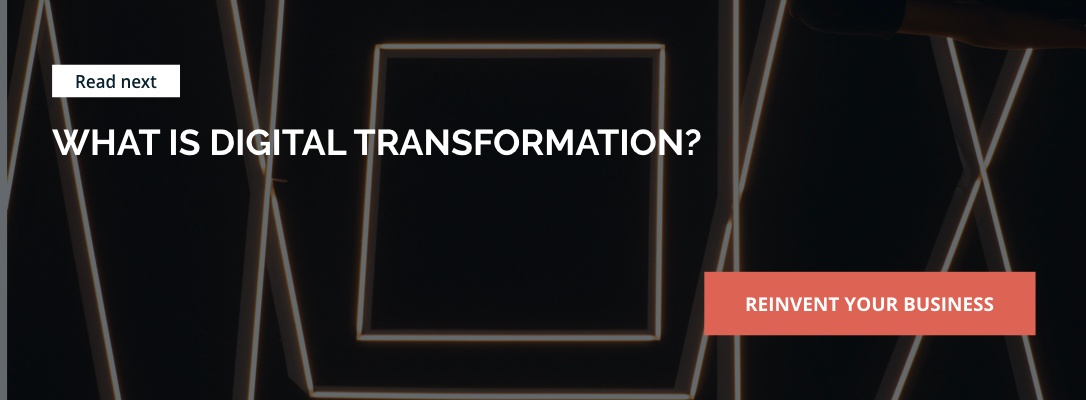Many CEOs in Australia are under pressure to execute a winning digital transformation strategy. But why are so many organisations failing?
Insight: Many businesses are adopting digital transformation initiatives without a strategic goal in sight and fail to consider how it impacts their people.
Data: 70% of digital transformation initiatives are unable to reach their goals. (Forbes)
Key Action Point: Align your strategy, culture, and processes for a successful digital transformation initiative.
Despite the latest buzz on digital technologies and the world’s top companies leading digital transformation initiatives, 47% of companies around the world don’t have a digital transformation strategy in place yet. Those that are trying to are either struggling to implement their digital transformation plans or failing.
A recent survey of directors, CEOs, and senior execs found that digital transformation risk is their #1 concern this year. But as of 2018, of the $1.3 trillion that was invested in digital transformation, $900 billion has been wasted.
In Australia, only a meagre 8% of Australian enterprises are getting results from their digital transformation activities, according to Gartner’s report on Digital Business Transformation: An Australia Perspective.
Innovation is the driving force behind these transformation efforts, but many organisations cannot implement them and follow through.
The report further discovers that organisations included in the survey have underestimated the risk of technology adoption. They had a low interest in experimenting with new business models, their current ecosystems are being underused and undervalued, and their workforces are not digitally ready.
Why Is Digital Transformation Failing?
Many businesses today are working hard to build better customer experiences. To them, digital technologies hold the promise of driving process efficiencies that pave the road towards better customer relationships through personalisation.
But many leaders fail to understand that it’s not as simple as it seems. For digital transformation to succeed, leaders need to align their culture, their strategy, and the process to achieve their goals. But many organisations keep missing the following pieces.
Culture Leads the Adoption of Technology
Organisations need to face the reality that industries are changing. In these disruptive times, businesses are called to act on this momentum to reflect this new reality. This is the only way they gain relevance with customers who are incredibly informed and have access to data in ways they never had before.
A survey from McKinsey shows three core organisational deficiencies in achieving a digital culture:
- Functional and departmental silos. They found that leading digital transformation companies work with cross-functional teams and break down silos to speed up communication and improve process flows.
- A fear of taking risks. Rather than stay away from risk, leaders need to foster a digital culture that is open to failing faster to fix errors as quickly as they come. Agile organisations are quick to adapt to change and implement initiatives when they are necessary.
- Difficulty forming and acting on a single view of the customer. Many businesses today focus on their offer instead of what the customer needs. To win, a digital culture needs to be customer-centric.
Part of the reason why so many transformation initiatives are failing is when people are resistant to change because they are afraid of being replaced or that process improvements will make them redundant. Leaders need to recognise and acknowledge these fears and help build their people up by working with them towards upskilling to prepare for the future.
In a previous article on change management, we talked about understanding the head and heart of change. At Step Change, we conduct a clear cultural diagnostic that involves setting the direction, motivate and equipping, and cascading and supporting.
To do this, you need to go through a few steps:
- Have a clear understanding of the underlying causes of symptoms
- Remember that change starts with the ‘listening’
- Get the team to develop the solutions
- Get clarity on each individual’s contribution
- Roll out initiatives team by team
- Get an understanding and alignment on internal and external audiences
Align Digital Transformation with Your Business Strategy
A digital maturity survey by Deloitte shows that in Australia, only 35% of respondents said their organisation had a clear and coherent digital strategy, compared to 46% globally.
Many companies make the mistake of only focusing on how to be digitally mature and adopting new technologies quickly. But digital transformation only plays a key role in helping you achieve your overall business strategy.
The questions you need to be asking should be: what are our overarching business goals, and how can innovation and digital transformation help us achieve them?
Tying It Together
Without the support of your people, it’s hard to bring your digital transformation initiatives to life. No matter how much your organisation strives to innovate, the best digital technologies cannot run successfully without the right mindset, the heart, and the strategy to implement them.
The few companies we know that have succeeded are those who know how to manage and sustain change and have ingrained the seeds of innovation and digital transformation in their culture and at the heart of their organisation — their people.
Although as leaders, we need to steer our companies to a digital cultural change to be relevant and ready for the future, ultimately, it is when the critical pieces that are our people, processes, and technology coming together that make all the difference in the success of our digital transformation efforts.









![#KatieTalks to Step Change’s Robert Steers [PODCAST]](https://blog.hellostepchange.com/hubfs/BLOG/Posts/5-Connection/katie-talks-robert-steers.001.jpeg)





